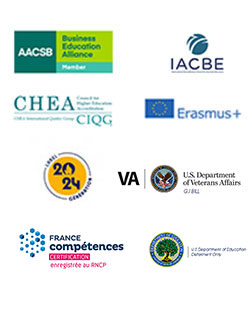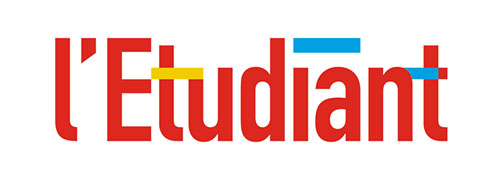
EDUCATION, ECONOMICS AND THE POLITICAL SYSTEM IN THE UNITED STATES
The United States is a fascinating, multi-faceted country that appeals to students from all over the world. Its history, economy, culture and the famous American dream contribute to Uncle Sam’s global reach. The American Business School of Paris invites you to discover the educational system, the economy and the political context of this great North American country.

THE AMERICAN EDUCATION SYSTEM
Schooling in the United States is compulsory from age 6 to 18. Students who leave school before graduation do not receive a certificate or diploma: they are considered to have “dropped out of school”. Each State is free to determine the different levels of elementary education. Depending on its duration, elementary education may be followed by a number of years in middle school (usually three years).
Secondary education takes place from grades 7 to 12, depending on state and local school districts. Some legal authority for education is delegated to the states and local school districts. However, the level of the high school diploma is set at the end of grade 12 in all States. The diploma for this level of education is called the High School Diploma.
The American higher education system (or post-secondary education) is diverse, accessible and autonomous. It is internationally recognized for its excellence. It is generally divided into two distinct segments:
- post-secondary vocational education and training, which does not lead to a diploma but may confer transferable credits under certain conditions;
- higher education, which includes training in schools that award diplomas giving access to university credits.
The various educational institutions offer varying levels of degrees. Nevertheless, degrees must meet specific minimum standards, regardless of which institution issues them, in accordance with U.S. accreditation policies.
THE ECONOMIC CONTEXT IN THE UNITED STATES
The United States is the world’s largest economy, ahead of China. The country is highly industrialized and achieves high levels of productivity, thanks in particular to the use of modern technologies. Agriculture, food processing, the automotive industry, chemicals, aerospace and pharmaceuticals are the leading wealth-generating sectors, contributing to its development and global leadership. The industrial sector, which is very varied, contributes to 18.2% of the GDP and employs 19.7% of the workforce.
The country is also the world’s leading producer of liquefied natural gas, aluminum, electricity and nuclear energy. It is as well the world’s third largest producer of oil. The tertiary sector claims the lion’s share of the American economy. In fact, the service sector generates 77.4% of GDP, which is more than three-quarters, and employs 79% of the workforce.
Despite the signing of a partial trade agreement in January 2020 between the United States and China, trade tensions persist between Uncle Sam and the Middle Kingdom. However, the newly elected president, Joe Biden, intends to play the appeasement card with China, while rebalancing trade relations with the European Union.
In addition, President Biden’s stimulus package will require an estimated $5.4 trillion in capital spending over the next decade. Many areas are involved, including infrastructure, health, clean energy, industry and education.
THE US POLITICAL SYSTEM
The United States is a federal Republic with 50 semi-sovereign states. The country adopts the system of representative democracy and the separation of powers between three branches of government: executive, legislative and judicial. This is also known as the system of checks and balances, as each branch is given certain powers so as to balance the other branches.
The President of the United States of America is the head of state, commander-in-chief of the armed forces and head of government. The U.S. presidential election is an indirect election. In fact, American voters do not vote to choose their President between candidates. They vote to choose the electors of each state. The latter constitute a college of representatives whose role is to designate the future tenant of the White House, who will serve a four-year term (or quadrennium). The President’s powers are controlled by the United States Congress, which includes the Senate (upper house) and the House of Representatives (lower house).
U.S. domestic policy remains highly polarized between the socially progressive Democratic Party, which favors state interventionism to regulate the “excesses” of the market economy, and the Republican Party, or Grand Old Party (GOP), which is characterized by its social conservatism and liberal capitalism. The GOP advocates a strict national security policy, being particularly firm (or virulent, depending on one’s point of view) towards China and Iran in particular.
Would you like to enrich your career with an exceptional experience in the United States of America? The American Business School of Paris offers you the opportunity to go for a semester or a full year of studies in this fascinating country, with a chance to earn a dual degree! Discover the American Business School of Paris’ partner universities in the United States and around the world. Make the most of it!








